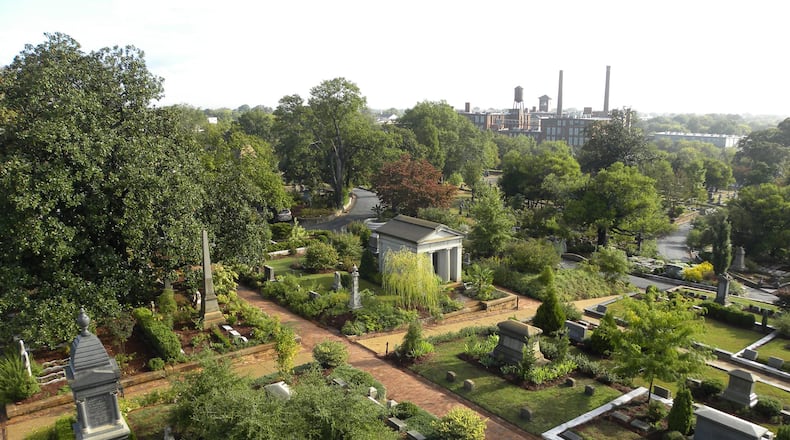Oakland Cemetery is the burial site for some of the city’s best-known figures.
It’s also home to more than 1,600 trees, some nearly 200 years old.
Within the past three decades or so, though, the historic Atlanta cemetery has lost more than 50 percent of its tree canopy.
“It’s hard to be a tree in the city,” said Angie Wynne, a spokeswoman for the Historic Oakland Foundation.
The foundation recently launched a fundraising campaign to raise $1 million to preserve the tree canopy at one of the city’s largest green spaces.
There are hundreds of species spread throughout the cemetery’s winding paths, open spaces and elaborate mausoleums from dogwoods to colorful crape myrtles, huge oaks and Southern magnolias.
Erica Glasener, Oakland’s Tree Canopy Fund coordinator and a horticulturist, said it can take as much $40,000 each year to keep the trees healthy.
RELATED: Sandy Springs residents can qualify for free trees
RELATED: Oakland Cemetery raises money to restore African American graves
“Age is a factor,” she said. “Some of these trees are 200 years old, and we want them to be around another 50 years. Trees have a natural life span, but in a tough urban environment, they need extra TLC. At the same time, we need to keep younger trees healthy and vigorous. Trees are like people. Each tree has a story to tell, and some of these trees are the only connection to generations past. If we want them to be here for future generations, we have to take care of them now.”
A lot of what officials plan to do at the 48-acre cemetery is proactive.
Funds raised will allow Oakland to continue to implement a Tree Care Action Plan created in 2012 by Spence Rosenfeld, founder of Arborguard.
The money will be used for such things as remedial pruning, removal of weak or damaged limbs, support cabling, new plantings, irrigation and organic soil therapy.
RELATED: City pauses removal over Grant Park trees
RELATED: Untold stories from Atlanta's oldest cemeteries
Over the years, the trees at Oakland have had to weather lightning strikes, old age, disease, high winds, pollution, drought, heat and root cramping from the walls surrounding the cemetery as well as the monuments. The city-owned cemetery doesn’t have its own irrigation system, so trees getting adequate water is also an issue.
Other culprits are pests like the Ambrosia beetle, a wood-boring insect that carries a fungal pathogen that can quickly kill a mature tree.
“If we want to keep our most vulnerable citizens (our children and elderly) healthy, our urban forests and trees must be taken care,” said Greg Levine, co-executive director and chief program officer for Trees Atlanta. “They clean our air, reducing asthma rates and filter our water as well . Oakland Cemetery is sandwiched between developing neighborhoods with very low tree cover, making every tree matter that much more. Planting, protecting and caring for our trees is critical to having Atlanta remain the best city in the South.”
Oakland was founded in 1850, during the height of the rural or garden cemetery movement, according to its website.
To that extent, its greenscape and monuments are a big draw for visitors who come to study history, art, architecture, horticulture, archaeology and photography.
Oakland is the final resting place for 70,000 people, including 27 Atlanta mayors, six former governors, Civil War generals and soldiers and thousands of unmarked graves. Among the notable people buried there are author Margaret Mitchell, former Mayor Maynard H. Jackson and golfer Bobby Jones.
The cemetery gets more than 55,000 visitors a year.
About the Author







